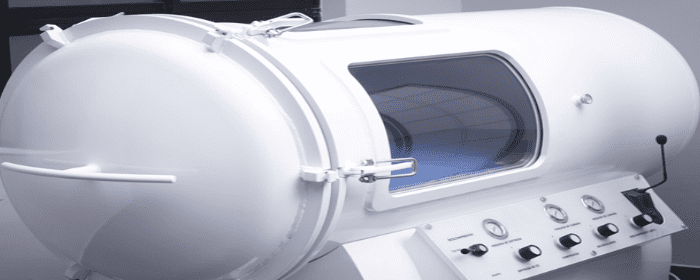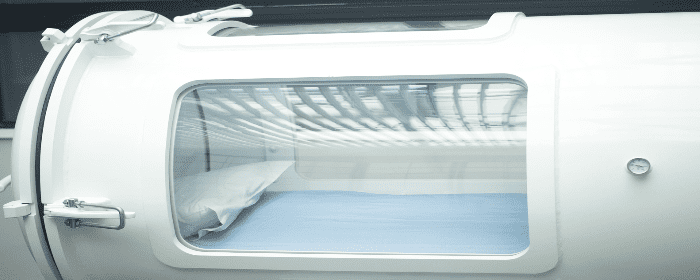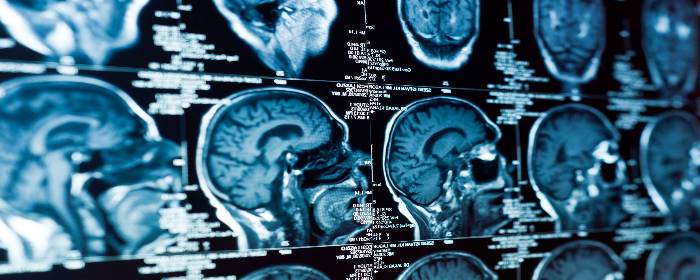
by admin | Apr 30, 2019 | Hyperbaric Oxygen Therapy, Stem Cell Research, Stem Cell Therapy, Traumatic Brain Injury
Traumatic brain injury (TBI) encompasses a wide range of injuries, neurological problems, and outcomes. On one end of the spectrum is a concussion, which can be mild and short lasting. At the other end of the spectrum, traumatic brain injury can be lethal or leave patients with chronic mental and physical problems. Despite this range of severities, traumatic brain injury is one of the leading causes of disability in the United States, affecting over 13 million people. People who suffer from chronic symptoms related to traumatic brain injury may struggle with chronic seizures, memory problems, concentration problems, agitation, among others. TBI can have profoundly worsened a person’s quality of life and overall well-being.
Unfortunately, little can be done to treat traumatic brain injury directly. Aside from treating symptoms, the main treatment for TBI is to have the patient to rest and avoid stimulation in an effort to give the brain time to heal. Patients can regain some function through intensive work with physical, occupational, speech, and recreational therapist. However, the brain’s ability to heal itself is limited compared to other tissues of the body. In short, the brain has very little capacity to make new brain cells after we are born. So once TBI has occurred, patients either need to depend on other healthy areas of the brain or simply adapt to their circumstances.
Fortunately, researchers are finding ways to improve on nature through hyperbaric oxygen therapy. Drs. Shandley, Wolf and other hyperbaric medicine researchers recruited a group of 28 military veterans who sustained a traumatic brain injury in Iraq or Afghanistan. These individuals had ongoing cognitive problems as a result of their brain injuries. Researchers placed some study participants in 2.4 atm avoid hundred percent oxygen, while the others simply underwent a placebo experience at basically normal pressure and oxygen levels. The two groups underwent 30 exposures each and took a cognitive test before and after these treatments.
Hyperbaric oxygen therapy increased the number of stem cells in the blood of patients with TBI. In other words, hyperbaric oxygen treatment was able to move stem cells from the bone marrow and perhaps other tissues into the bloodstream. At the same time, those treated with hyperbaric oxygen performed better on tests of cognition including ImPACT, BrainCheckers, and PCL-M test. Moreover, no adverse effects of treatment were observed. Taken together, these results suggest 30 sessions of hyperbaric oxygen treatment at 2.4 atm was able to increase stem cells in the blood and improve cognition in US warfighters who suffered traumatic brain injury during combat. These results are encouraging news for the millions of veterans and nonveterans who sustained a traumatic brain injury every year.
Reference: Shandley, S. et al. (2017). Increased circulating stem cells and better cognitive performance in traumatic brain injury subjects following hyperbaric oxygen therapy. Undersea & Hyperbaric Medical Society. 2017 May-Jun;44(3):257-269.

by admin | Apr 9, 2019 | Alzheimer’s Disease, Hyperbaric Oxygen Therapy, Stem Cell Therapy
Alzheimer’s disease causes patients to have difficulty recalling memories and performing tasks. Alzheimer’s disease is progressive, which means it gets worse over time. Once Alzheimer’s disease begins, patients either stay the same or get worse. Most people notice symptoms getting worse over a period of 10 years. However, some people with Alzheimer’s disease will get worse very rapidly, over the course of a few years.
Because Alzheimer’s disease is discussed frequently in popular media, many people know that part of the disease process is the accumulation of abnormal proteins in the brain, namely beta-amyloid plaques and tau neurofibrillary tangles. One less well-known effect of Alzheimer’s disease is that it interferes with blood flow in the brain. This decreased blood flow is so common, in fact, that doctors can detect low brain activity using positron emission tomography (PET), which can help make the diagnosis of Alzheimer’s disease.
Between 2002 and 2012, researchers tested 244 treatments for Alzheimer’s disease, and only one medication was approved by the FDA. After all this time, there is still no cure for Alzheimer’s disease. In fact, the drugs used to treat Alzheimer’s disease are mostly ineffective. At best, they slow the progression of the disease for several months to a few years.
This lack of success has prompted several research groups to focus on other treatments for Alzheimer’s disease. One experimental treatment for Alzheimer’s disease is hyperbaric oxygen therapy. In hyperbaric oxygen therapy, patients rest in a specialized chamber while they experience oxygen at a slightly higher pressure than they would in the outside world.
Researchers wanted to determine whether hyperbaric oxygen therapy could improve the symptoms of Alzheimer’s disease, but also whether they could see those brain changes using PET. To do this, Drs. Harch and Fogarty enrolled a woman with rapidly deteriorating Alzheimer’s disease in their clinical study. She was exhibiting the characteristic signs of Alzheimer’s disease and reduced brain activity and blood flow in her brain. They treated her with a series of hyperbaric oxygen therapy treatments (1.15 atmospheres, 40 minutes, 5 days per week over 66 days).
After 21 treatments, the woman had increased energy, her mood was better, she was better able to perform activities of daily living, and she was actually performing crossword puzzles. After 40 hyperbaric oxygen treatments, she had better memory and concentration, she was sleeping better, her appetite had improved, she was able to hold conversations and able to use a computer.
Interestingly, when the researchers performed follow-up PET study after hyperbaric oxygen therapy, blood flow and brain activity improved as much as 38% compared to the PET study before treatment.
Additional clinical studies with larger groups of Alzheimer’s disease patients are needed to determine how effective hyperbaric oxygen therapy is, what pressure to use, and how many treatments are needed, etc. Nonetheless, the impressive changes reported in this case study are promising, and should spark additional clinical research.
Contact a Stemedix Care Coordinator for more information on Regenerative Medince Therapy combined with Hyperbaric Oxygen Therapy (HBOT) for Alzheimer’s Disease.
Reference: Harch et al. (2019). Hyperbaric oxygen therapy for Alzheimer’s dementia with positron emission tomography imaging: a case report. Medical Gas Research. 2019 Jan 9;8(4):181-184.

by admin | Mar 23, 2019 | Hyperbaric Oxygen Therapy, Parkinson's Disease, Stem Cell Therapy, Studies
Parkinson’s disease is widely known as a neurological condition that causes motor symptoms. Typically, patients with Parkinson’s disease have pill-rolling tremor, cogwheel rigidity, and a shuffling gait. However, about half of all patients with Parkinson’s disease also have psychiatric symptoms such as anxiety and depression. It can be challenging for patients and caregivers to deal with Parkinson’s disease, but if anxiety and depression are also present, it can make matters worse. When psychiatric symptoms occur, they can make Parkinson’s disease more difficult to treat, increase the burden on caregivers, and greatly reduce quality-of-life for patients.
One of the things that make psychiatric symptoms so difficult to treat in patients with Parkinson’s disease is that doctors have limited treatment options. The antidepressants that they would normally use to treat depression and anxiety can make motor symptoms of Parkinson’s disease worse. People with Parkinson’s disease often struggle with sleep disturbances, and typical antidepressants can make sleep problems worse, too. Not surprisingly, many patients with Parkinson’s disease suffer from depression and anxiety and never find adequate treatment.
Physicians recently reported their experience with a patient with Parkinson’s disease who they treated with hyperbaric oxygen. The man had struggled with Parkinson’s disease for 1.5 years and had slipped into a severe depression. He had lost interest in pleasurable activities, was only sleeping about 2 to 3 hours each night, unintentionally lost over 40 pounds, and was having thoughts of suicide. He also had significant anxiety issues that made his life very difficult. Regular drug and psychotherapy treatments for anxiety and depression did not work for this man, so physicians were left with few options.
The man with Parkinson’s disease, severe depression, and anxiety underwent 30 days of hyperbaric oxygen treatments. He inhaled pure oxygen in a hyperbaric chamber for 40 minutes per session at 2 atm of pressure. In as little as four days of hyperbaric oxygen treatment, the man was sleeping better and longer than he did before treatment. His mood has also improved.
After 30 days of hyperbaric oxygen treatments, the man was able to sleep for 8 to 10 hours a night. Not only did his psychiatric symptoms improve, but his Parkinson’s disease symptoms also improved. While he still had Parkinson’s disease symptoms after hyperbaric oxygen treatment, the symptoms had improved substantially.
When physicians followed up one month after treatment had ended, the patient was still sleeping through the night, his mood was good, and he did not need assistance with his activities of daily living.
It is important to remember that this is a case study, the results of a single patient. Nevertheless, the improvements in both Parkinson’s disease and severe symptoms of anxiety and depression are incredibly impressive. For this man, at least, hyperbaric oxygen therapy had a substantial positive effect in his life where other treatments had failed.
Patients can also combine Hyperbaric Oxygen Therapy with Regenerative Medicine. Regenerative Medicine is an alternative option to help manage the symptoms of Parkinson’s Disease. The stem cells have the potential to replicate and repair numerous cells of the body, including those damaged by Parkinson’s. These advancements in the treatment of Parkinson’s Disease work to fully regenerate missing or damaged tissue that the body would not ordinarily regrow.
Call your dedicated Care Coordinator at 800-531-0831 for more information.
Reference: Xu, Jin-Jin et al. (2018). Hyperbaric oxygen treatment for Parkinson’s disease with severe depression and anxiety. Medicine. 2018 Mar; 97(9): e0029.

by admin | Mar 22, 2019 | Hyperbaric Oxygen Therapy, Stem Cell Therapy
As 15 million Americans struggle with a chronic respiratory disease, it’s clear that breathing is difficult for many people for a variety of reasons. When you’re dealing with a chronic disease or trying to recover from an illness, hyperbaric treatment is a great way to get enough oxygen to your body. You can even experience a detox treatment with the help of hyperbaric oxygen treatment as oxygen assists in all the body’s processes.
Here are five reasons you should try hyperbaric oxygen treatment when you’re struggling with many physical afflictions.
Great For Detoxing
If you want to help foster your body’s natural cleansing abilities, then hyperbaric oxygen treatment is the way to go. The first benefits you notice is how much cleaner your body feels and how it helps your immune system. Oxygen therapy has long been recognized as a way to help clean and detox your body. As more people move to urban environments, they’re exposed to all manner of pollutants and environmental problems. When you try out oxygen treatments, you’ll feel like you just spent a week out in nature.
Detoxing the body from the poisons that we absorb is a challenge. The heavy metal poisoning that an increased number of people deal with is hard for the body to detox itself from. However, as more oxygen moves throughout your body and brain, you immediately feel healthier. Your brain needs all the help it can get to regulate and repair tissues. This helps to boost your immune system and your overall health. You’ll notice the difference almost immediately.
Boost Your Immune System
Our immune systems are fragile, especially during winter months when it seems like colds and flu strains are on every surface. When you boost your immune system with the help of hyperbaric oxygen, you’ll be able to keep bad bacteria from growing. If that bacteria can’t get ahold of your immune system, you’ll stay healthier all throughout the year. The growth of yeast and certain viruses is kept at bay with the help of hyperbaric oxygen. There are lots of diseases that have been stifled with hyperbaric oxygen.
Those diseases that take a toll on your immune system, from hepatitis to shingles and Lyme disease are held at arm’s length with hyperbaric oxygen. If you suffer from any of these ailments, you’ll notice the symptoms will be limited. Using this oxygen treatment, you can ensure that your systems are reduced dramatically so long as you keep your treatments up.
Heal Quicker
If you’re dealing with any wounds or have been through major surgery, it’s hard to recover quickly. When you’re weak, your body tends to heal more quickly and when you’re healing, you’re weaker. It’s a lose-lose situation without the help of the right treatment.
Thankfully, oxygen therapy is able to help to heal wounds that range from diabetic problems, skin grafts, or even traumatic injuries. By moving oxygen around your body and controlling your body’s supply of blood you get help where you need it and heal more efficiently. It’s even been shown to help with injuries related to MS, dementia, Parkinson’s, and epilepsy. Our brain is sensitive to having too little oxygen. It’s even triggered by having access to too much, which can make us feel lightheaded. When you increase the oxygen under controlled conditions, you’ll notice that your problems will be alleviated more quickly than ever.
Deal with Nerve Problems
When you’re struggling with nerve issues, it’s hard to find relief. Nerve pain gets under the skin and tears at your psyche in some respects. If you can’t get relief, then you’re going to have painful attacks that feel like they have no end. For people who have scar tissue, getting feeling back or helping alleviate pain is their focus. Some types of neuropathy can be helped with hyperbaric oxygen. For sufferers of fibromyalgia, a deeply painful nerve condition, hyperbaric oxygen treatment is a way out of that discomfort.
By stimulating conductive fibers on nerves, the body regulates its pain. When you use oxygen to help take care of that, then you’re able to treat it on your conditions. You’ll feel better quickly and be free of unnecessary discomfort that comes with dealing with a nerve problem.
Increase Your Energy
During a vigorous workout, it’s possible to feel less stressed or sore after if you have enough oxygen. When lots of oxygen is pumped into the room or when the person exercising wears a hyperbaric device, they’ll find they can move faster for longer. Oxygen therapy has taken this concept somewhere that works for everyday life. When people leave hyperbaric oxygen therapy, they report feeling more refreshed and awake than before. They note that their mind and body feel more comfortable and sharper. They’ll be alert and awake, with more energy than they had before the treatment. An increasing number of spas offer this treatment as a way to relax and to relieve stress. If you try this after a massage or in addition to other treatments, you could find drastic changes to your energy.
Some people report that they feel more focused after treatment. Because oxygen is vital for brain function and cellular growth, our minds are sharper, more focused, and functioning at a higher level. Reaction times drop and our bodies feel much more connected to the tasks at hand rather than fatigued or removed.
Hyperbaric Treatment Has So Many Benefits
If you haven’t considered hyperbaric treatment for getting oxygen to the essential parts of your body and brain that need it. Hyperbaric oxygen treatment has given so many people the ability to feel better, more energetic, and to heal from afflictions that you should try it ASAP.
To learn more about the potential for hyperbaric treatment to help you, check out our latest posts.

by admin | Jan 23, 2019 | Hyperbaric Oxygen Therapy
Recent evidence has been accumulating that suggests that hyperbaric oxygen
can improve neuropathic pain, or pain that results from injuries to the central
or peripheral nervous systems. Despite increasing evidence for the value of
hyperbaric oxygen in pain management, there has been little clarity on how
hyperbaric oxygen confers its benefits. A recent study,
published in the American Journal of
Translational Research, aimed to investigate the mechanisms by which
hyperbaric oxygen relieves neuropathic pain. Given that the traditional
treatments for neuropathic pain are associated with adverse side effects, the
researchers hoped to improve understanding of neuropathic pain so that better
treatment options can be developed.
Prior to this experiment, hyperbaric oxygen treatment had
been shown to preserve the integrity of muscle and nerves and also to inhibit
the activation of astrocytes, among other activities that could be relevant for
its impact on neuropathic pain. Indeed, astrocytes, for instance, are known to modulate
pain. For this study, the scientists hypothesized that hyperbaric oxygen
treatment is able to help with neuropathic pain largely based on its impact on
autophagy. Autophagy refers to the way that cells protect themselves from
harmful stimuli and environments. Once nerve injury occurs, autophagy is
impaired.
The researchers showed that indeed, hyperbaric oxygen
treatment was able to reduce the autophagy impairment that results from nerve
injury. They further showed the specific way that this reduction occurred,
which was through the inhibition of a specific pathway called the mTOR pathway.
These findings provide support for the potential use of hyperbaric oxygen in
the treatment of neuropathic pain. Future research will help to elucidate if
and precisely how this approach can be used to help those who suffer from this
type of injury-induced pain.
Reference
Liu, Y.D., Wang, Z.B., Han, G., & Zhao, P. (2017).
Hyperbaric oxygen treatment attenuates neuropathic pain by elevating autophagy
flux via inhibiting mTOR pathway. American
Journal of Translational Research, 9(5), 2529-2648.

by admin | Nov 5, 2018 | Hyperbaric Oxygen Therapy, Traumatic Brain Injury
Many US warfighters are left with traumatic brain injury (TBI) and/or posttraumatic stress disorder (PTSD) after suffering blast injury during battle. TBI is one of the leading causes of disability in the United States, and PTSD is rapidly becoming a leading cause of disability among US veterans. PTSD leaves sufferers with flashbacks, severe anxiety, sleep disturbances, mood disorders, and cognitive deficits. Traumatic brain injury, on the other hand, may cause a variety of mental and emotional problems. When these conditions occur in the same patient, it can have devastating effects on quality of life for the veteran’s remaining years.
The main treatment for traumatic brain injury is to simply allow the brain time to heal. Unfortunately, the brain is different than skin or other tissues of the body; it only has limited capacity to heal itself after an injury. The main treatment for PTSD is psychotherapy (talk therapy) and a rather nonspecific collection of medications including antidepressants and antipsychotic drugs. Unfortunately, people with both traumatic brain injury and PTSD are more difficult to treat, and generally, have poorer outcomes.
Researchers at the Veterans Administration studied the effects of hyperbaric oxygen therapy among military veterans with mild to moderate traumatic brain injury and PTSD. In a phase 1 clinical trial, veterans received 40 treatments of hyperbaric oxygen therapy lasting for 60 minutes each. Each treatment was 1.5 times atmospheric pressure or 50% more than they would experience under normal circumstances. Despite this modest dose of hyperbaric oxygen, the benefits to warfighters were remarkable.
After treatment, the veterans had substantial improvements in short-term memory, attention, concentration, and executive function. Shockingly, their IQ increased by nearly 15 points on average. They also enjoyed a substantial reduction in the frequency and severity of headaches. On average, they had a 30% reduction in PTSD symptoms. In fact, nearly 2/3 of trial participants were able to reduce the dose of or stop their PTSD medications.
Study participants also underwent special studies to examine the effects of hyperbaric oxygen therapy on brain tissue and blood flow. Patients treated with hyperbaric oxygen showed substantial increases in brain blood flow and marked increases in the volume of brain tissue. In other words, hyperbaric oxygen therapy was able to accelerate brain healing in this study.
This groundbreaking research has led to the use of hyperbaric oxygen therapy is a treatment for TBI and PTSD in other military personnel and also civilians. As additional clinical trials are published, the hope is that more health insurers, Medicare, and the VA will reimburse patients for this important treatment.







 St. Petersburg, Florida
St. Petersburg, Florida
